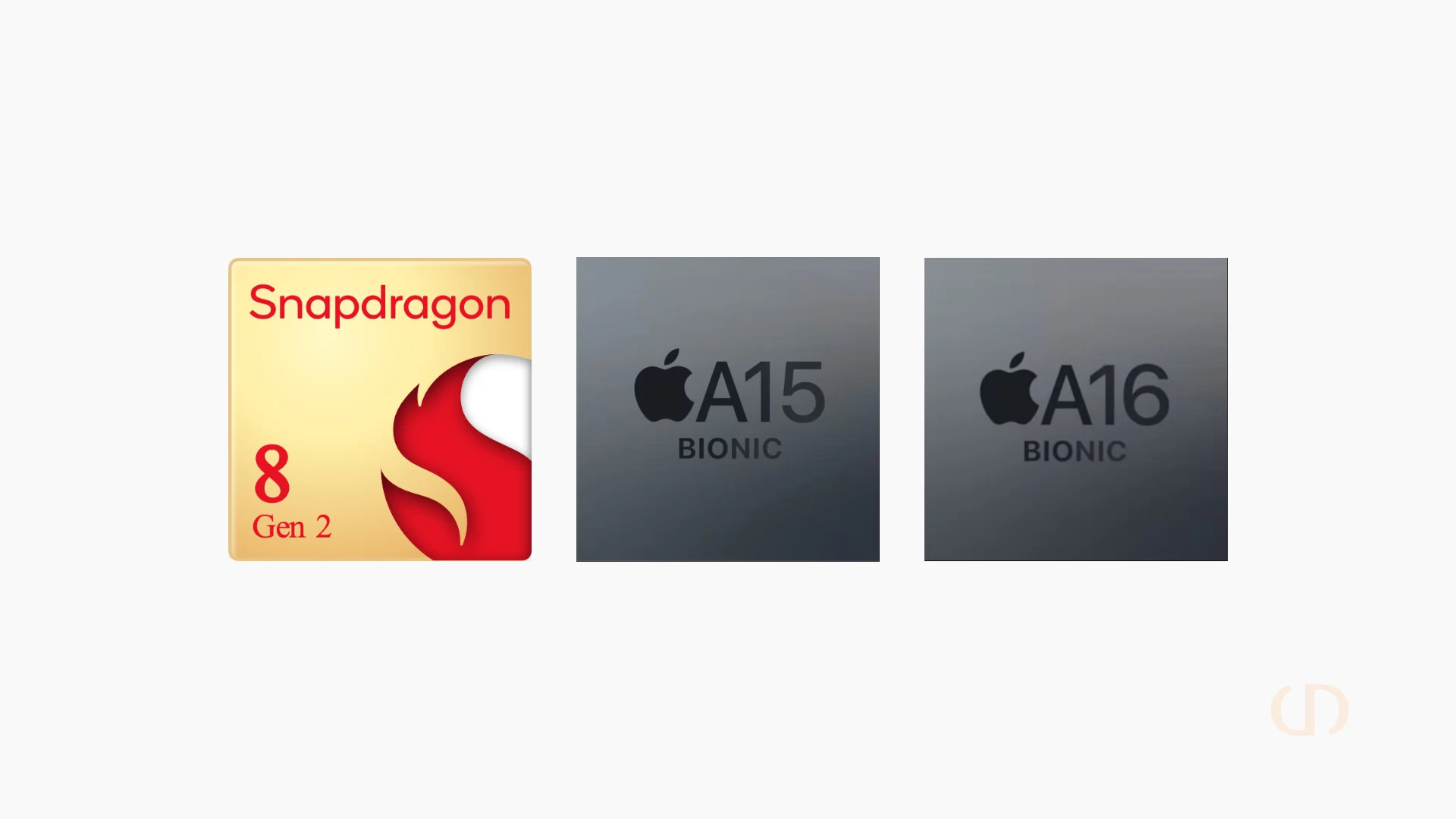Snapdragon 8 Gen 2 Vs Apple A15 Bionic Vs Apple A16 Bionic
We are going to be taking a look at the Snapdragon 8 Gen 2, Apple A15 Bionic, and Apple A16 Bionic in a versus match-up and see how they hold up against one another.
Qualcomm just recently unveiled the latest or should I say the newest comer in their flagship snapdragon line on the 15th of November 2022, the Qualcomm Snapdragon 8 Gen 2 which is named the successor of their Snapdragon 8 Gen 1 chipset. Qualcomm has promised some new features that would come with this new chipset, which we would have to wait and see. The company (Qualcomm) has also said that the chipset will be launched with commercial devices at the end of 2022.
Now we have the Apple A15 Bionic, It was announced on September 14, 2021, and is manufactured using a 5nm process technology, it has a 2-core Avalench at 3240 MHz and 4-core Blizzard at 2020 MHz. Apple A15 Bionic is a 64-bit ARM-based system on a chip designed by Apple Inc.
Next, we have the Apple A16 Bionic, which has a 2-core Everest at a whopping 34600 MHz and a 4-core Sawtooth at 2020 MHz. It is a 6-core chipset that was announced on September 7, 2022, and is manufactured using a 4-nanometer process technology.
Specs Comparison between the Snapdragon 8 Gen 1 vs A15 Bionic vs A16 Bionic
| Snapdragon 8 Gen 2 | Apple 15 Bionic | Apple 16 Bionic | |
|---|---|---|---|
CPU | Snapdragon 8 Gen 2 1x Coretex-X3 @ 3.19GHz && 2x Cortex-A715 @ 2.8GHz && 2x Cortex-A710 @ 2.8GHz && 3x Cortex-A510 @ 2.0GHz | Apple 15 Bionic 2x Avalanche @ 3.24 GHz && 4x Blizzard @ 2.01 GHz | Apple 16 Bionic 2x Everest @ 3.46GHz && 4x Sawtooth @ 2.02GHz |
GPU | Snapdragon 8 Gen 2 Andreno 740 | Apple 15 Bionic 5-core Apple GPU | Apple 16 Bionic 5-core Apple GPU |
Caches | Snapdragon 8 Gen 2 8MB L3 | Apple 15 Bionic 12MB L2 (Performance cores) 4MB L2 (efficiency cores) 32MB (System cache) | Apple 16 Bionic 16MB L2 (Performance cores) 4MB L2 (efficiency cores) 24MB (System cache) |
Machine Learning | Snapdragon 8 Gen 2 Hexagon - fused scalar, tensor, and vector. Mixed precision INT8/INT16 INT4 support | Apple 15 Bionic 16-core Neural Engine | Apple 16 Bionic 16-core Neural Engine |
Codecs | Snapdragon 8 Gen 2 AV1, H.264, H.265, VP8, VP9, Dolby Vision | Apple 15 Bionic H.264, H.265, VP8, VP9, ProRes | Apple 16 Bionic H.264, H.265, VP8, VP9, ProRes |
Modem | Snapdragon 8 Gen 2 Snapdragon X70 5G modem | Apple 15 Bionic Snapdragon X65 5G modem | Apple 16 Bionic Snapdragon X65 5G modem |
Connectivity | Snapdragon 8 Gen 2 Wi-Fi 7, Bluetooth 5.3, LE Audio | Apple 15 Bionic Wi-Fi 6, Bluetooth 5.3 | Apple 16 Bionic Wi-Fi 6, Bluetooth 5.3 |
Fab | Snapdragon 8 Gen 2 TSMC 4nm (N4) | Apple 15 Bionic TSMC 2nd gen 5 nm (N5P) | Apple 16 Bionic TSMC 4nm (N4) |
Benchmark results
| Snapdragon 8 Gen 2 | Apple 15 Bionic | Apple 16 Bionic | |
|---|---|---|---|
GeekBench 5 CPU Single core | Snapdragon 8 Gen 2 1489 | Apple 15 Bionic 1696 | Apple 16 Bionic 1870 |
GeekBench 5 CPU multi-core | Snapdragon 8 Gen 2 5178 | Apple 15 Bionic 4742 | Apple 16 Bionic 5474 |
3DMark - GPU (wildlife performance) | Snapdragon 8 Gen 2 13596 | Apple 15 Bionic 9745 | Apple 16 Bionic 9883 |
Conclusion
To decide which processor comes out on top, we need to know which one offers the best in what category.
For peak CPU performance, the A16 Bionic offers the best single-core performance, the Snapdragon 8 Gen 2 beats the A15 in terms of multi-core scores, however, the A16 still comes out on top, especially considering it is a Hexa-core processor
For better GPU performance, the Snapdragon 8 Gen 2 offers the graphics performance having scored a respectable 13596 3DMark Wildlife
Also, it would help if you take into consideration the ecosystem that you are involved in and your primary use case, for example, Games, Photography, Cinematography, etc.
But due to a near-excellent CPU performance in the single and multi-core score of the A16 bionic and the better GPU performance of the Snapdragon 8 Gen 2 chip, I would give the win to the Snapdragon 8 Gen 2, also because it offers the best frame rates.
